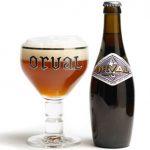 Orval
Orval
The first on the list is a trappist beer.
Currently there are only 8 trappist beers in the world, 7 of which are Belgian.
This one has a complex flavor. At bottling, brettanomyces yeast (a local wild yeast) is added, which, along with the dryhopping method, gives this beer its unique flavor. It is unusually crisp for a trappist, but it may take several sampling sessions for you to come to the same conclusion.
As with all trappist and some abbey beers, the Orval monastery only keeps part of the proceeds to ensure their survival, the rest of the money goes to charity. "
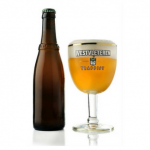 Westvleteren
Westvleteren
Another Trappist beer, this beer was named"Best Beer in the World" by RateBeer.com and a slew of other beer related websites.
This beer is nothing short of amazing, but the lack of availability is a bit of a party pooper. This beer isn't available in any stores. The monks at the Saint Sixtus monastery do not give money to charity like Orval does.
They only want to brew and sell enough beer to get by. As a result, their beer can only be bought by calling the beer hotline. You provide your license plate and arrange a date and time on which you can pick up your brewskis.
You can only order one case a month. If you're lucky, you can sometimes order two, depending on the kind of beer and depending on how busy the monks have been doing other trivial things, like praying and stuff. Plus, when it comes to communication, the Saint Sixtus Abbey hasn't quite made it into the 21st century just yet. No email, no cell phones, no Blackberries. They only have one phone line and, to add insult to injury, no call waiting. When I called them to get a case, I had to try a staggering 159 times before I didn't get the busy signal and got through.
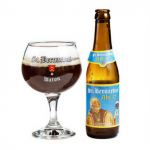 Saint Bernardus
Saint Bernardus
Shortly after World War II ended, the monks at the Saint Sixtus monastery decided to outsource the brewing of their Westvleteren beer to another brewery down the road. For nearly 46 years, the Saint Bernardus brewery brewed what was then known as St Sixtus beer, following the original Westvleteren recipe. In 1992 this agreement ended because of the decision by the trappist breweries that a beer could only be sold as a "trappist" if it was brewed within the walls of the monastery.
Since the agreement ended, the St Bernardus brewery has continued to make their own beer, which is virtually identical to Westvleteren. Both breweries use a different strand of yeast, which results in a subtle taste difference, only noticeable to the most trained of palates.
The good news? This beer is available in stores all over the country. That is, if you're lucky enough to live in Belgium.
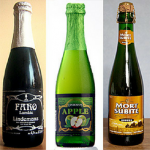 Lambic
Lambic
Lambic is a type of beer with an old tradition, going back to the 16th century. Unlike most other beers which are
fermented by adding yeast, lambic is the product of natural fermentation. It is exposed to a type of bacteria that is only found in a particular area around Brussels. Lambic has a very distinctive flavor and aftertaste, which can be quite sour.
Lambic comes in many types: the unblended kind, Geuze and Faro (which is much sweeter because of the added brown
sugar). It is also used as the base for many fruit-flavored beers such as Kriek (with cherries), Framboise (with
raspberries), Pêche (with peach) and many others. Often, these fruit-flavored beers are referred to as "girly beers".
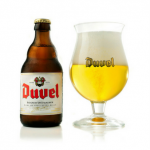 Duvel
Duvel
Duvel is Flemish slang for the Dutch word "duivel", meaning devil. Make no mistake about it, this ale is definitely worthy of its name. I've seen grown men cry after consuming 4 of these.
The trouble with Duvel is that it's deceptively easy to drink. It goes down the hatch like water but with an alcohol content of 8.5%, this beer isn't to be taken lightly. Don't let that be a reason not to try this intense, aromatic beer though, as it's quite delightful.
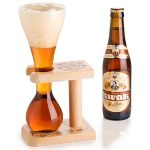 Kwak
Kwak
I've added this beer to the list mainly because of its original glass, rather than its taste. Legend has it that the glass and its holder were designed back in the 19th century by Paulus Kwak, the brewer, and owner of a tavern called De Hoorn.
